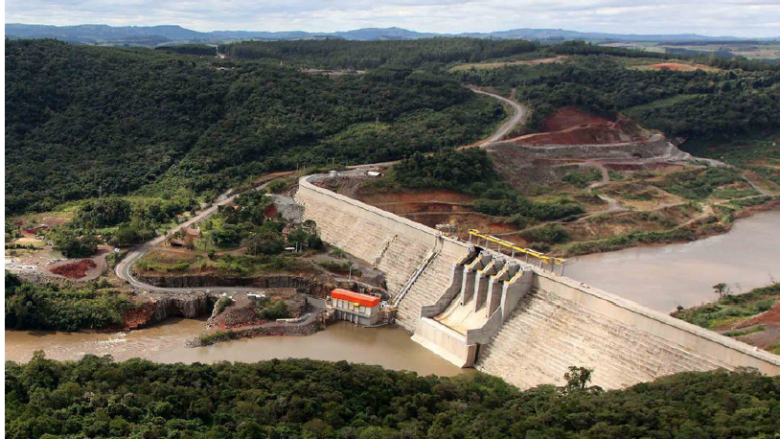Results
Implementation of the project was affected by a series of external shocks, including political and regulatory changes and natural disasters. In addition, the project represented the Bank’s first large tendering and implementation of smart grid technology: US$95 million for advanced metering infrastructure (AMI). Even under these constraints, the project obtained results in the following key areas:
Operational Performance
Reduced frequency of outages for all six DisCos.
Met or exceeded anticipated reductions in the duration of outages for five of the six DisCos, with significant improvements in the sixth, which was hampered by a 1-in-500-year flood.
Rehabilitation of 988 kilometers (km) of medium (MV) and low (LV) voltage line.
Construction of 1,015 km of new MV and LV lines.
Improved voltage levels, as reflected in a 50 percent reduction in regulatory compensation paid to customers (between 2016 and 2017).
Improved project management practices (based on the Project Management Institute’s PMBOK), with Eletrobras managing more than 250 contracts.
Improved consumer safety (fewer fires and electrocutions caused by illegal connections).
Four of the six DisCos received customer satisfaction awards from the Electricity Regulatory Agency.
Commercial Performance
At some point during the project, all six DisCos exceeded targeted collection rates. At the end of the project, however, the country experienced an extreme recession, its worst ever. Despite this, three of the DisCos maintained their improved performance, and the other three avoided deterioration. Analysts have concluded that collection rates would have been worse under the recession conditions had it not been for the project’s achievements.
New smart meters went to 84 percent of targeted customers, including all 12,475 MV users (exceeding the project’s target by 77 percent), and 40,851 large scale LV users received AMI meters (Advanced Metering Infrastructure) with telemetering capability, reducing fraudulent activity and theft. In the first year of implementation in Rondônia, the number of routine repeat fraud offenders in the MV network decreased from 42 to 2.
Recadastering (relisting) of 3,130,099 consumer points and 1,888,653 consumers, leading to 500,000 consumers billed who previously had not been.
Regularization of 82,826 consumer units (equivalent to 232,246 megawatt hours) aggregated, approximately US$70.5 million, as of December 2017.
Financial Performance
Considering the several exogenous factors affecting performance, five of the six DisCos (Acre, Alagoas, Piauí, Roraima, and Rondônia) lowered losses by project closure. Four of those continue on a decreasing trend. (Roraima was affected by the Venezuela crisis, outside of its control.)
The project achieved over 725 gigawatt hours of recovered and aggregated electricity.
Institutional Improvements
Environmental and social management best practices were adopted in the six DisCos.
Material recycling is now the norm for the six. All were awarded the Chico Mendes Social Environmental Prize and green stamp for responsible social and environmental management, and they are now sharing and replicating the program in Brazil’s other DisCos.
Social action and communications campaigns were instituted. These aid in project execution, reduce losses, and combat fraud; alert and identify low-income users concerning social tariff benefits; and help consumers gain proof of residency to access other government social programs and benefits.
Bank Group Contribution
The World Bank, through the International Bank for Reconstruction and Development (IBRD), intended at project inception to provide US$495 million; Eletrobras was to supply US$214 million. During implementation, however, as a result of multiple shocks (economic, regulatory, and political), the Brazilian real devalued from 1.75 to approximately 4.00 reais (effectively doubling the available funds from the Bank, as most contracts were nationally bid). At the same time, the government extinguished Eletrobras’s operating fund. As a result, the Bank’s portion of the loan covered expenses originally allocated to Eletrobras, and final disbursements were US$272 million from the Bank and US$148 million from Eletrobras.
Beneficiaries
The project benefited the more than four million consumers in six states now receiving improved electricity services, which means fewer and shorter outages, better voltage control (fewer equipment burnouts), and new (legalized and safer) connections. A further expected result, as losses decline, will be lower tariffs. In addition, previously unregistered consumers now have proof of residency, enabling them to access social tariffs and other social programs and providing opportunities to open bank accounts and benefit from other day-to-day services and conveniences.
Moving Forward
As mentioned earlier, the private sector had not been interested in buying the six distribution companies (Amazonas, Acre, Roraima, Rondônia, Piauí, and Alagoas), as their overall performance was considered too poor and risky. Within six months of finalizing project activities, all six DisCos were privatized.
